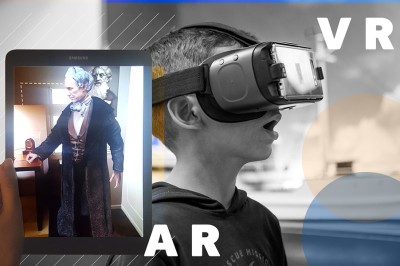Phone Booths: A Hidden Past in Plain Sight
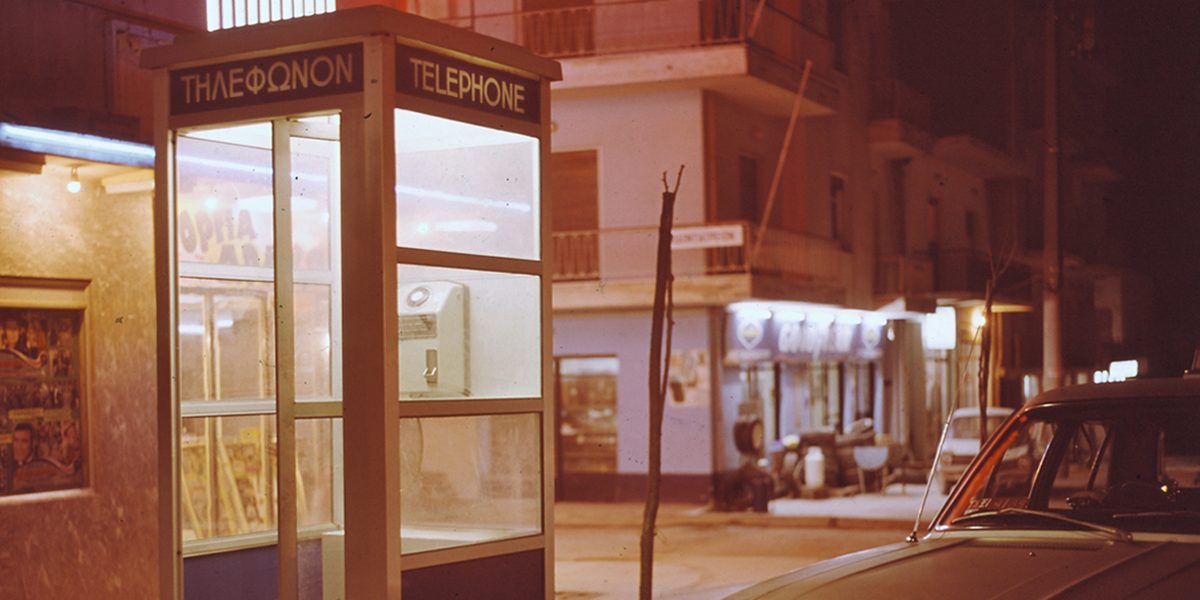
The era of public telephony, according to reports in the Athenian press, came to an end in August 2025 with the decision of the Municipality of Athens to gradually withdraw the inactive payphones from the city’s public spaces. Although the obligation to maintain public telephones had ceased to be mandatory since 2021, their use, due to mobile telephony, had become so marginal that for the general public they had turned almost invisible. Payphones occasionally surfaced in the news either as annoying remnants of the past —sources of pollution and vandalism— or as nostalgic objects carrying memories of a romantic, innocent era when constant connectivity and networking were not yet possible. Before being perceived as an urban problem or as exhibits of charming decline, however, telephone booths for decades served citizens’ need for shared telephony, especially at a time when access to a telephone was limited for technological or economic reasons.
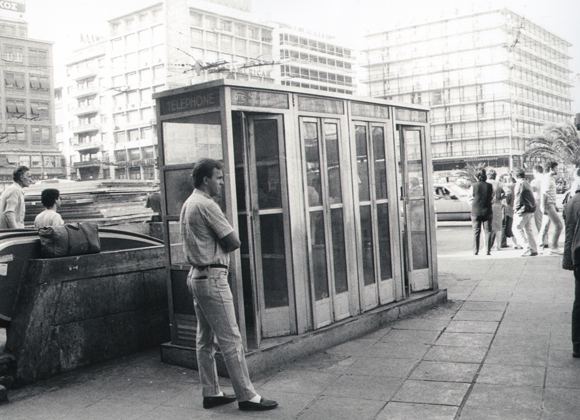
A Symbol of Groundbreaking Change
The first telephone booths appeared on the streets of Athens in 1933. They were installed by AETE in 51 central locations of Athens and Piraeus and in 13 across the rest of Greece. With so few booths available, it was only natural that queues would form outside them. Our sources —cartoons, humorous sketches, and newspaper articles— describe the crowding around the telephone booths and the comic situations that arose. Quarrels, gossip, friendships, flirting, and even amorous encounters transformed the booths into hubs of sociability, creating the following paradox: private telephone conversations turning into public spectacles. For this very reason, telephone booths were regarded as symbols of modernism:
“Because, truly, the real symbol of this great transformation that befell Athens is not the towering skyscrapers, nor the gigantic transport projects, nor the colorful lights (…). The symbols of this change are those narrow, elongated boxes that we come across time and again before us —on busy street corners, in squares, in front of public buildings— those elegant constructions before which a line of people patiently waits: the outdoor telephone booths.”
(“ATHINAI” magazine, 1935)
The fact that the telephones did not accept ordinary coins but instead required special tokens, which the public obtained from kiosks, reinforced the autonomy of the telephone booths and the sense that they constituted urban islands of communication in an underdeveloped society in terms of telecommunications — such as the postwar one, where there was less than one telephone per 100 inhabitants.
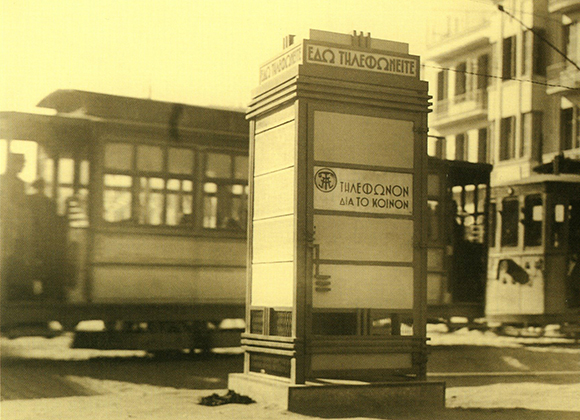
“With a Drachma Instead of a Token”
In 1970, coin-operated payphones replaced token operated payphones. The modernization of public telephony extended to the booths themselves. In place of the Bauhaus-style “elegant constructions” of the interwar years, made of wood or iron, there appeared minimalist booths of glass and aluminum, as well as semi-open “Mini Box” booths made of plastic. This change reflected the faster and more stressful pace of life in the modern metropolis, the need for brief and functional conversations. During the 1980s, however, the aluminum booths frequently fell victim to vandalism, leaving the public unable to use them. For example, in 1983 alone, there were 2,000 reported malfunctions in the 840 telephone booths operated by OTE in Athens and Piraeus. The demand for public telephony was mainly met by the “red telephone” or “Tamura”, which could be found almost everywhere in public space —at kiosks, cafés, convenience stores, grocery shops, entertainment venues, and so on. Yet the golden age of public telephony came in the following decade, the 1990s, with the installation of card-operated payphones (cardphones).
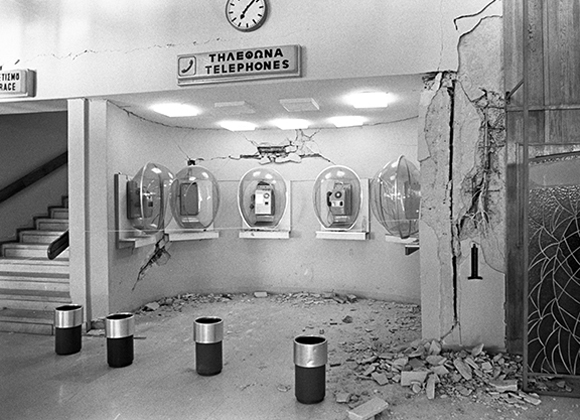
The Rise and Fall of Cardphones
The first cardphones appeared in Italy in 1976 and operated with paper cards containing a magnetic strip. They later spread to France (1979) and Japan (1982), using plastic chip cards. In Greece, they arrived in September 1992, during the Thessaloniki International Fair, and achieved unexpected success. Within just 16 months of the installation of the first cardphones, 18 million phonecards had been sold. “OTE is getting rich from the cardphones” newspapers of the time wrote. By 1994, 12,000 cardphones had been installed across Greece. Within a decade, that number had risen to 64,000, while in 2002 alone, 80 million phonecards were sold. It was a triumph of public telephony that revealed the public’s strong need for telephone communication. Yet it was also the beginning of the end. With the spread of mobile telephony from the late 1990s, telephone booths gradually began to lose their significance. From 2000 onwards, OTE’s profits from the sale of phonecards steadily declined, although a 2002 survey showed that 41.3% of respondents still used phonecards once or twice a week. But this was their last spark. As mobile penetration in Greece reached 120% of the population by 2008 —one of the highest rates in Europe— cardphones were soon rendered obsolete.
Today, although they are no longer a primary means of communication, telephone booths remain a vivid part of collective memory and cultural heritage. They symbolize an era when communication required waiting, coins, a little privacy, and a spirit of sociability inside a small booth in the heart of the city.
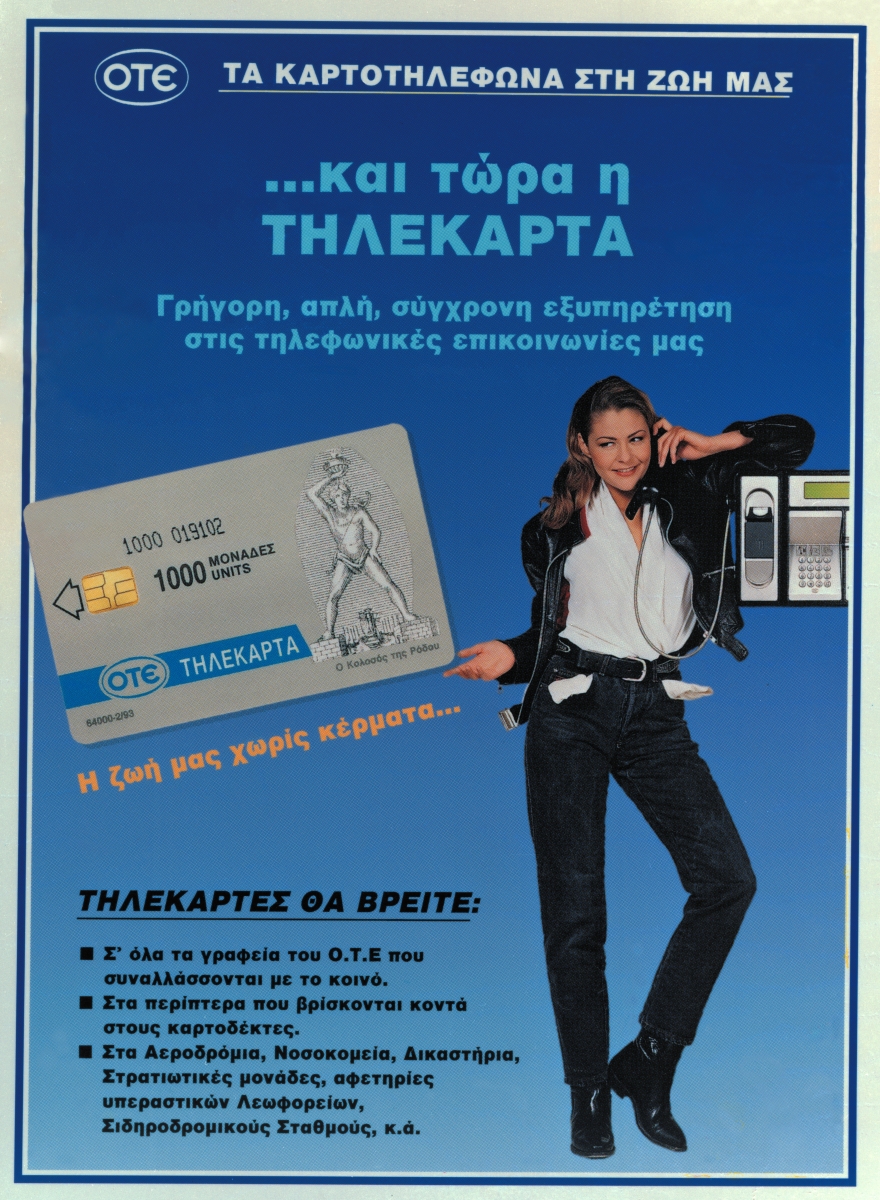
Photos:
- Telephone booth, 1970s.
- Public telephone booths of OTE at Omonia Square, 1986. Photo: Floros Brothers – Nikolaos L. Floros.
- Telephone booth of AETE, 1930s.
- Public telephone cabins in Thessaloniki, 1978. Photo: Dimis Argyropoulos.
- OTE advertising poster for the introduction of the phonecard in telecommunications, 1992.



